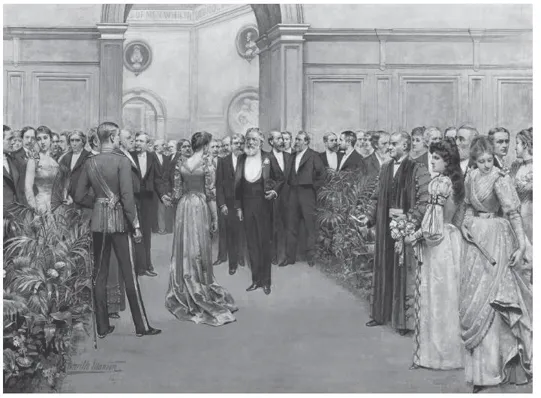
Private Collecting, Exhibitions, and the Shaping of Art History in London
The Burlington Fine Arts Club
- 222 pages
- English
- ePUB (mobile friendly)
- Available on iOS & Android
Private Collecting, Exhibitions, and the Shaping of Art History in London
The Burlington Fine Arts Club
About this book
The Burlington Fine Arts Club was founded in London in 1866 as a gentlemen's club with a singular remit – to exhibit members' art collections. Exhibitions were proposed, organized, and furnished by a group of prominent members of British society who included aristocrats, artists, bankers, politicians, and museum curators. Exhibitions at their grand house in Mayfair brought many private collections and collectors to light, using members' social connections to draw upon the finest and most diverse objects available. Through their unique mode of presentation, which brought museum-style display and interpretation to a grand domestic-style gallery space, they also brought two forms of curatorial and art historical practice together in one unusual setting, enabling an unrestricted form of connoisseurship, where new categories of art were defined and old ones expanded. The history of this remarkable group of people has yet to be presented and is explored here for the first time. Through a framework of exhibition themes ranging from Florentine painting to Ancient Egyptian art, a study of lenders, objects, and their interpretation paints a picture of private collecting activities, connoisseurship, and art world practice that is surprisingly diverse and interconnected.
Frequently asked questions
- Essential is ideal for learners and professionals who enjoy exploring a wide range of subjects. Access the Essential Library with 800,000+ trusted titles and best-sellers across business, personal growth, and the humanities. Includes unlimited reading time and Standard Read Aloud voice.
- Complete: Perfect for advanced learners and researchers needing full, unrestricted access. Unlock 1.4M+ books across hundreds of subjects, including academic and specialized titles. The Complete Plan also includes advanced features like Premium Read Aloud and Research Assistant.
Please note we cannot support devices running on iOS 13 and Android 7 or earlier. Learn more about using the app.
Information
Part 1
Introduction
Introduction
A New Gentlemen’s Club for London
Chapter Contents
History and a Description of the Club, its Activities, and Functions
The Founding of a New Members’ Club
The Collector’s Club. A new society of amateurs of vertu has just been formed under this title; consisting solely of such gentlemen as collect for their own tastes, objects of antiquity and are not dealers therein … Baron Marochetti gave the use of his studio for the preliminary meeting, at which a large assemblage gathered and Sir A. Fountaine’s antique majolica formed an important point of attraction.5
These exhibitions would form unparalleled opportunities for viewing private collections that had rarely been seen before. The unlocking of specimens from rich private sources and the meeting of collectors at gatherings where information could be exchanged, comparisons drawn and expertise and knowledge of objects gained were the real if unspecified intentions, behind the club’s formation.7

rooms, supplies provided, refreshments, etc. Toovey to receive the amounts collected for entrance fees and annual subs (collected by him too); agreement with Toovey can be terminated if number of members falls below 100 in the 2nd year; if members exceed 150, then Toovey will only get the annual subscriptions.20
The Burlington Fine Arts Club
At a general meeting of the Members of the Club held at 177 Piccadilly, on the 20th of July, 1866, the Report of the Committee appointed at the meeting of the 5th of June, 1866, was read and it was unanimously resolved, -First, to accept Mr Toovey’s offer of his premises over the ground floor at 177 Piccadilly, and to establish the club therein.Secondly, that the rooms shall be opened for the reception of members, if possible, on the 1st of December next, or, at the latest, on the 1st of January, 1867.Thirdly, that the members be requested immediately to pay the entrance fee of five guineas, and the first year’s subscription of five guineas, to the account of the Burlington Fine Arts Club, at the London and Westminster Bank, St. James Square.The above payment of ten guineas to entitle to all privileges of the club up to the 1st of January 1868.21
Table of contents
- Cover
- Half Title
- Title Page
- Copyright Page
- Table of Contents
- List of Figures
- List of Plates
- Preface
- Acknowledgements
- Part 1 Introduction
- Part 2 Exhibitions
- Part 3 Epilogue
- Appendix A: List of Special Exhibitions Mounted by the Club with Visitor Numbers (where Available) from 1869
- Appendix B: Biographical Index of Active Members and Contributors
- Bibliography
- Index